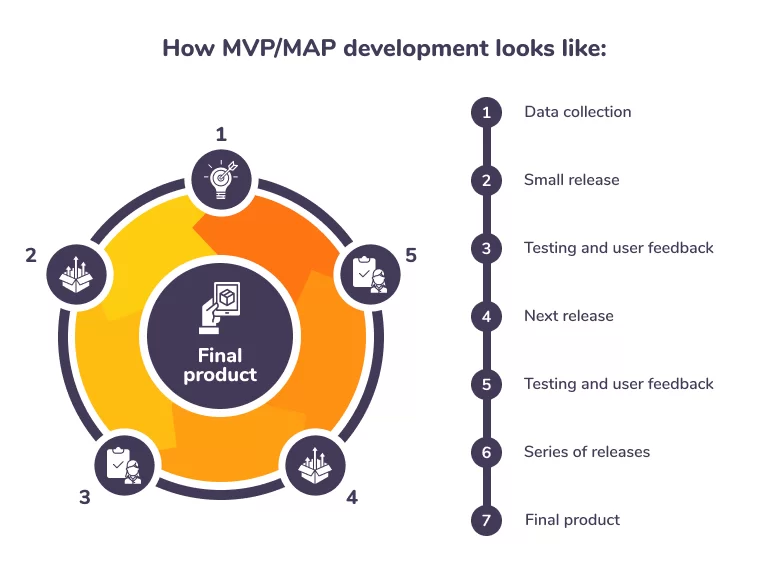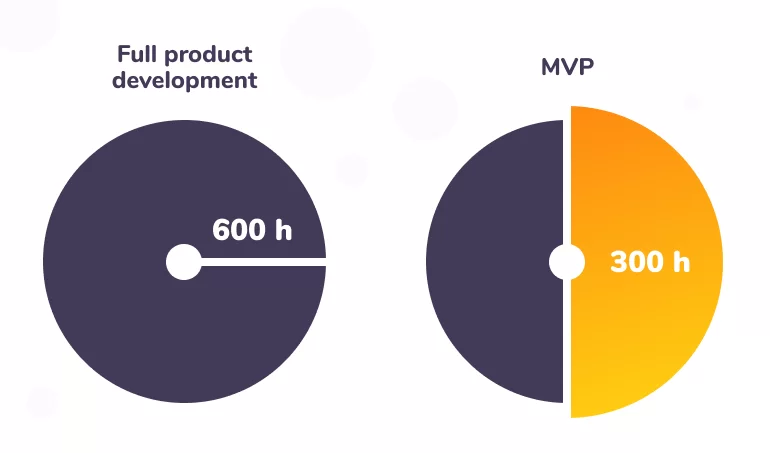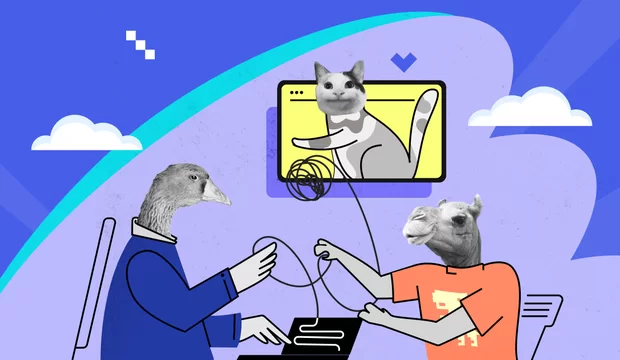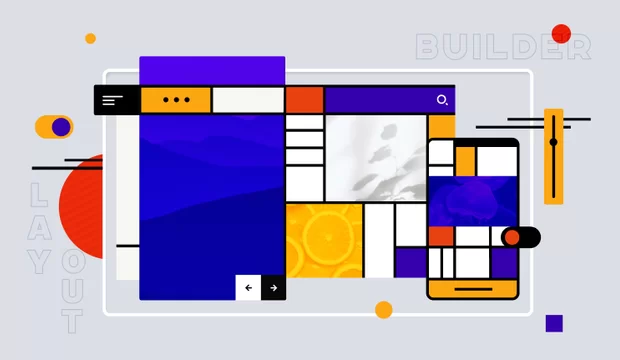What MVP is and what the fuss is all about
The G-Globe survey says that 74% of startups that dared to scale very early will end up with no money and no future. Well, okay, it’s our rather rude wording but the truth remains. The most popular solution since the Cenozoic era has always been an MVP. Don’t eat a whole mammoth until you’re sure it’s edible. Don’t spend all your resources on a particular market until you’re sure it’s a deal.
We’re going to tell you how to define what you need - the MVP or MAP, compose a set of features, get an understanding of the costs breakdown, and get a definite answer - whether you need the MVP/MAP or not.
MVP vs MAP
Let’s make it clear with the terms first. There’s the term “MVP” which stands for “Minimum Viable Product”. There’s also the term “MAP” coined by Dave McClure. It’s a “Minimum Awesome Product”. It’s an advanced MVP with the greater effort put in to satisfy a customer: elaborated design, improved UX.
Long story short: do the MVP for the markets that have little or no competition and alternatives, and go for the MAP when a market already exists and has products like yours. You’re here to beat the competitors, right? You can’t do it with crappy design and very complicated workflow.
It’s better to be early than sorry, so go get your first paying customers or just customers and make them pay when you’re powerful like Google maps :)
Why do an MVP/MAP
This is the most important paragraph in the whole article.
The MVP/MAP - is not something to throw away. It’s just a s m a l l piece of the overall functionality. This little piece will be developed into a product by step-by-step iterations and small releases. Let’s face the reality: it’s unlikely that you have that much money to develop a big product at once. Start small and grow fast.
The MVP/MAP goal is to let you test your idea with a limited budget and within a limited time.
How the MVP development process looks like:
- Data collection, choosing a hypothesis (feature) to test first.
- Small MVP release
- Testing and user feedback collection with the help of a development team. If this stage is omitted, further development becomes uncontrolled. How do you know what stops users in terms of features? Please, rely on statistics first. It can be collected with the help of Google Analytics, Google Tag Manager, etc.
- Next release.
- Testing and user feedback collection
- <..>
- MVP/MAP turns into a final product after a series of releases and users’ data analysis
- Testing and user feedback collection (yes, that shouldn’t be stopped).
You’d better run away from the MVP development company that claims to develop a huge and complicated product fast. That’s not gonna happen.

How to understand what your product’s main feature is and reduce the extra functionality
Don’t add unnecessary functionality, they say. Don’t forget about the product’s overall viability, they say. What, for humanity's sake, does it mean? How to build MVP?
Let’s talk business.
When we get an incoming inquiry for website or app development, or startup MVP development, we are usually told about some sets of features people would like to implement, all of this coated in a fancy design as Competitor A has.
We love technical tasks! We truly adore it when people think over the stuff they need but it will be a hundred times better if the goal of an app or a website and its business model have appeared first. That’s why our onboarding brief form includes questions like “What business problem does your project solve (increase sales, increase conversions, etc.)?”, “Could you describe a final product in terms of functions it has and the most important actions it should do.? E.g., an e-commerce website where visitors can customize t-shirts and order them.”
I guess you’ve already understood what I’m driving at. Your goal should be measurable (get N thousand users and make them pay so that you increase sales) and realized through particular features or few ones. These two things are now the criteria of including features into your MVP/MAP or eliminating them.
So, if you need your users to look for a rental car and use promo codes exactly through your app, probably you don’t need a dragon flying through all the pages and screens. At least, for the first time.
What does happen when you release your MVP/MAP?
- If you’re not developing the flying dragons feature right now, probably you’ve released your app early enough to be the first. Here’s to you!
- You get first user feedback (“Hey, it’s too boring, we need a dragon over here”) and fill in the gaps. Since you weren’t obsessed with delivering the perfect product, you probably have some money left to work on the feedback.
- You check whether a market exists at all and if there’re users.
- You get firsts evangelists of your product.
- You either go for another round of development based on the received feedback or fail fast, fail cheap.
How much MVP costs: breakdown of budget on the real-life example
How do we know that developing an MVP/MAP is the money-saving practice? Whatever approach your development team preaches - T&M or fixed prices - less work usually costs less money (here’s to you, obviousness). However, remember that some teams have a minimum acceptable budget.
Here are the simple calculations we did for our own startup product (to be released soon!).
- The MVP took us approximately 300 hours and we were able to test it on a small audience
- Having checked their feedback, we decided to upgrade our MVP to the MAP: we did the redesign and reworked the admin interface. It took 300 more hours.
Now do some math and multiply this number of hours by an average hourly rate at your region:
- North America: $60-$140 per hour
- Western Europe: $40-$60 per hour
- Eastern Europe: $20-$40 per hour
- Asia and Pacific: $10-$20 per hour
You’d save 50% on your MVP by simply reducing unnecessary features as we did first, or you’d save $3 000 - 42 000 USD. Yes, we spent the money later anyway but we did our changes based on the feedback, not our guesses.
That’s the difference.

Quick test: MVP or MAP?
Quiz time! Check up whether you are ready to create an MVP/MAP. One “yes” equals 1 point. Sum up everything and check the results.
- You have a unique product/service idea
- You have done the research and there’s no complete replica
- You have formulated your Unique Selling Proposition
- There’s no mature market yet
- There’s the market of similar products/services but your idea is somewhat different
- You already have raised funds for the first version of a product
- It’s easy for you to raise money/take them from your existing business and invest them in the development
The results calculations:
0-2 "yes" - We’re sorry but it’s better to conduct a research first before conquering the world.
3-5 "yes" - Go for the MVP.
6-7 "yes" - You have everything to go for the MAP but, please, do consult with a developer first.
Summary: your action plan if you decided you need an MVP/MAP
- Formulate your Unique Selling Proposition (USP)
- Prioritize features you’d like to test
- Find a development team
- Releasing the first version
- Do the testing on real users
- Ask the development team to help you gather user feedback
- Increment the changes based on the user feedback
- Release the next version, test it, collect the feedback, release the next version <..>
In the Lean Startup approach, it’s called The Build-Measure-Learn Feedback Loop.




